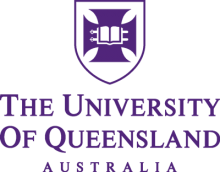Australia’s richest universities are in danger of undermining their reputations by prioritising the recruitment of overseas postgraduate students, according to a new report.
Staff numbers at the “U5” universities – Melbourne, Monash, Queensland, Sydney and UNSW Sydney – have also languished as they dialled back domestic recruitment and hoovered up master’s students from overseas.
“The so-called research-intensive U5 universities have collectively shifted their focus away from undergraduate and research students to postgraduate coursework…[in order] to sustain significant revenue growth,” says the paper by former University of Melbourne deputy vice-chancellor Frank Larkins.
The new report is a companion paper to Professor Larkins’ earlier investigation of the “stellar” financial growth of the five universities. He crunched a decade of Education Department data to track the changes that had fuelled the U5’s prosperity.
Between 2009 and 2018, the five lost one-eighth of their share of domestic students following a shift in focus that saw them recruit three additional overseas students for every extra local – in contrast to Australia’s other 34 universities, which admitted two more Australians for every extra foreign student.
International taught postgraduates’ proportion of U5 enrolments snowballed from 8 to 19 per cent, while domestic undergraduates’ share fell by one-quarter during the same period. Research student numbers grew less quickly across the five big research-intensives than the other 34 universities.
While the five institutions doubled their tally of international doctoral students, they experienced a 6 per cent decline in local PhD candidates. “Some universities have fewer domestic research students than they had 10 years ago,” Professor Larkins said.
He added that 60 to 70 per cent of universities’ journal articles were co-written by research students, whose numbers were “not growing, and in some cases going backwards…We’re in this artificial intelligence age, requiring more sophisticated innovation. Have we got the balance right?”
His study found that academic staff numbers across the U5 members had grown by just 14 per cent – well behind the 39 per cent explosion in their enrolments. Academic staff numbers increased by an average of 29 per cent at the other universities.
Most of the five also recorded declines in the numbers of staff who both taught and researched, reflecting a switch to teaching-only academics and raising questions over their commitment to the teaching-research nexus.
Professor Larkins told Times Higher Education that the figures exposed the universities’ “deliberate policy” to divest themselves of research-active teaching staff, despite the “huge increase” in students. “Is that good in a national sense? Do university councils realise what’s happening?” he asked.
The University of Queensland said the criticisms were based on “simplistic measures” that overlooked professional staff’s contribution to the student experience. “Traditional sources of funding are declining, requiring universities to look beyond government for financial support,” a spokesman added.
The University of Sydney agreed that more analysis was warranted on “the impact of ongoing changes in Australia’s complex higher education sector” but said such deliberations must be “more deeply embedded in the prevailing policy context”.
Professor Larkins said the most “remarkable” finding was the similarity in the changes at the five institutions, and how dramatically they had diverged from the “status quo” approach of the other 34.
The universities said their commitment to research and teaching was demonstrated by their strong performance in publication counts, international rankings, research assessment exercises and satisfaction surveys. “The quality of our research is world class and improving,” Sydney said.
Register to continue
Why register?
- Registration is free and only takes a moment
- Once registered, you can read 3 articles a month
- Sign up for our newsletter
Subscribe
Or subscribe for unlimited access to:
- Unlimited access to news, views, insights & reviews
- Digital editions
- Digital access to THE’s university and college rankings analysis
Already registered or a current subscriber?










